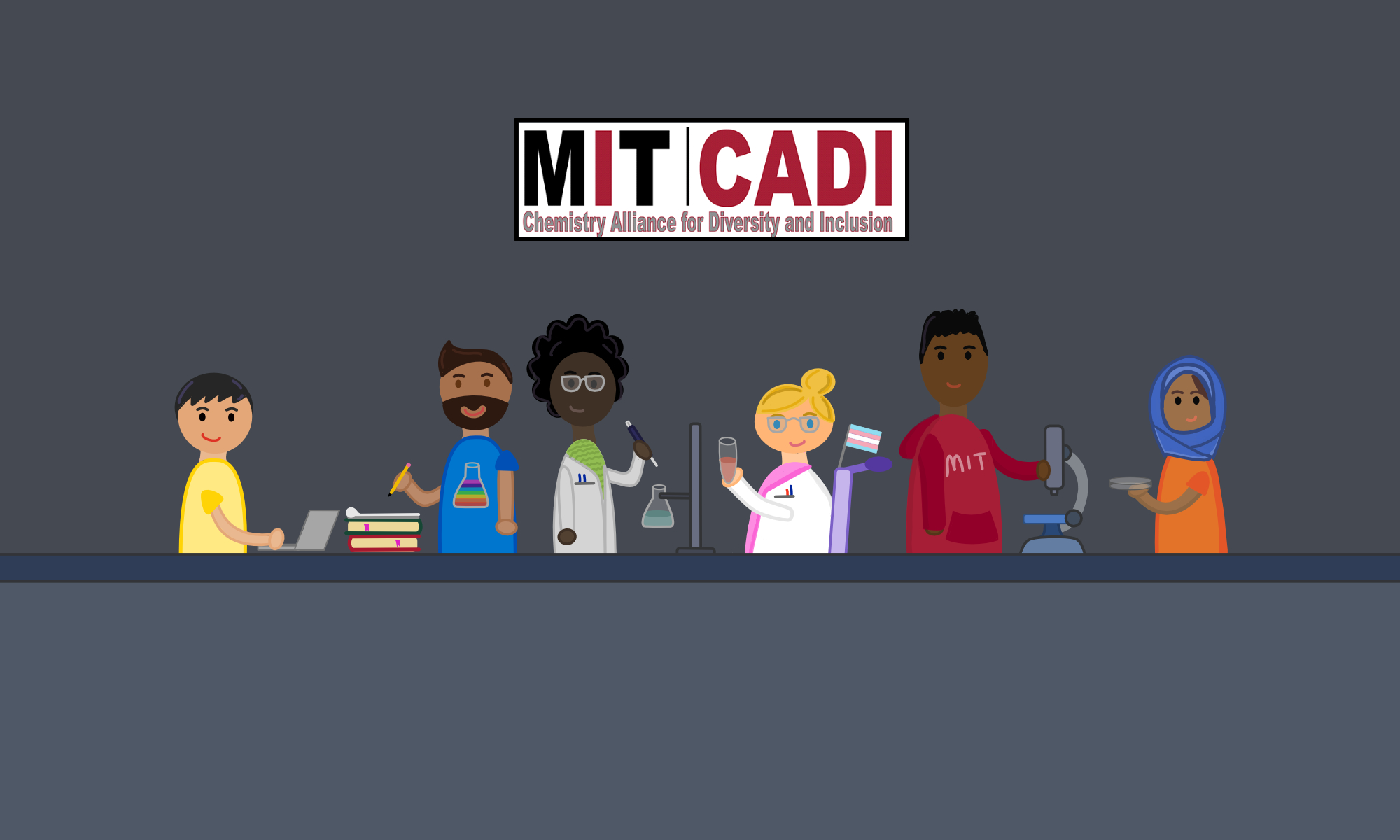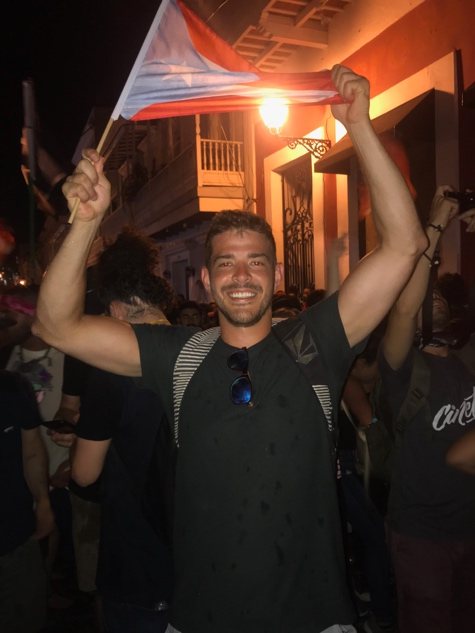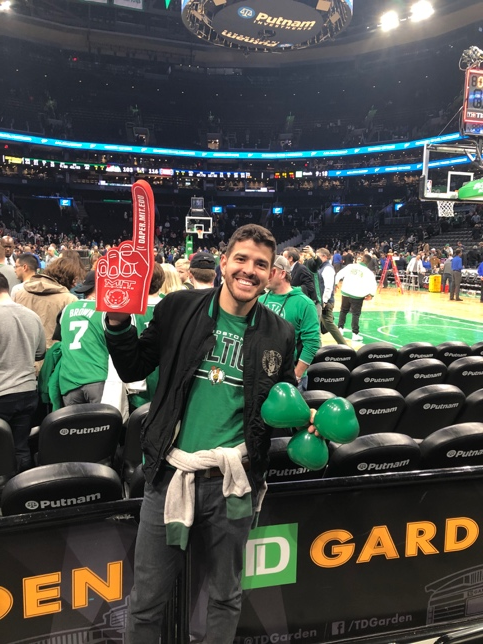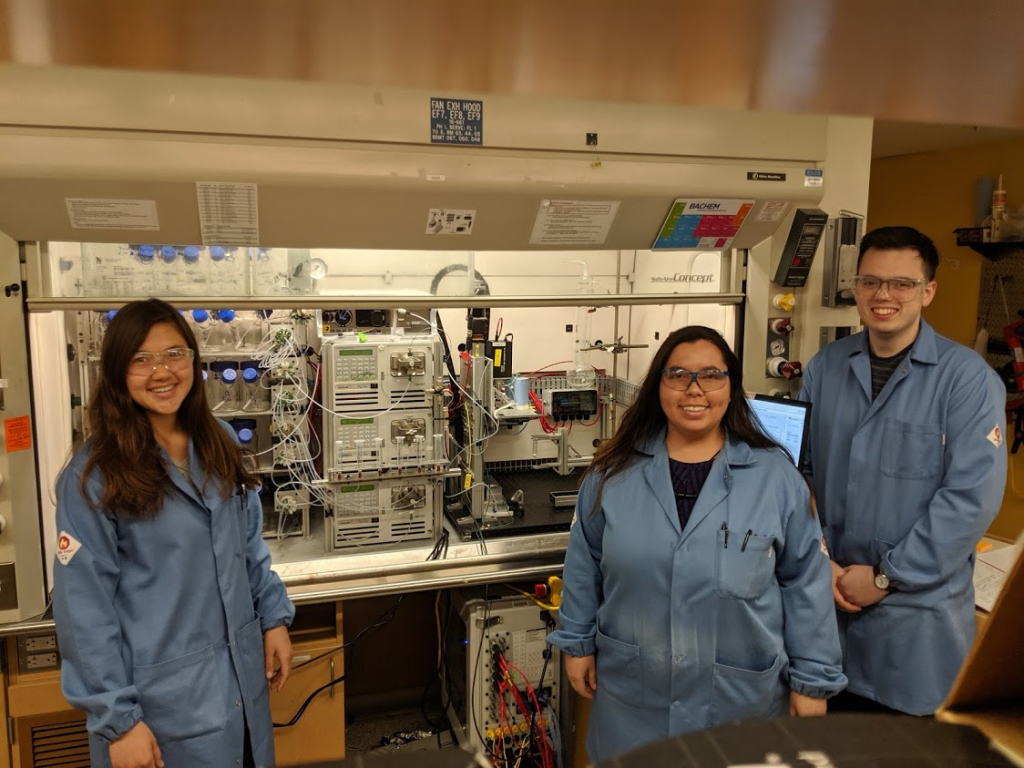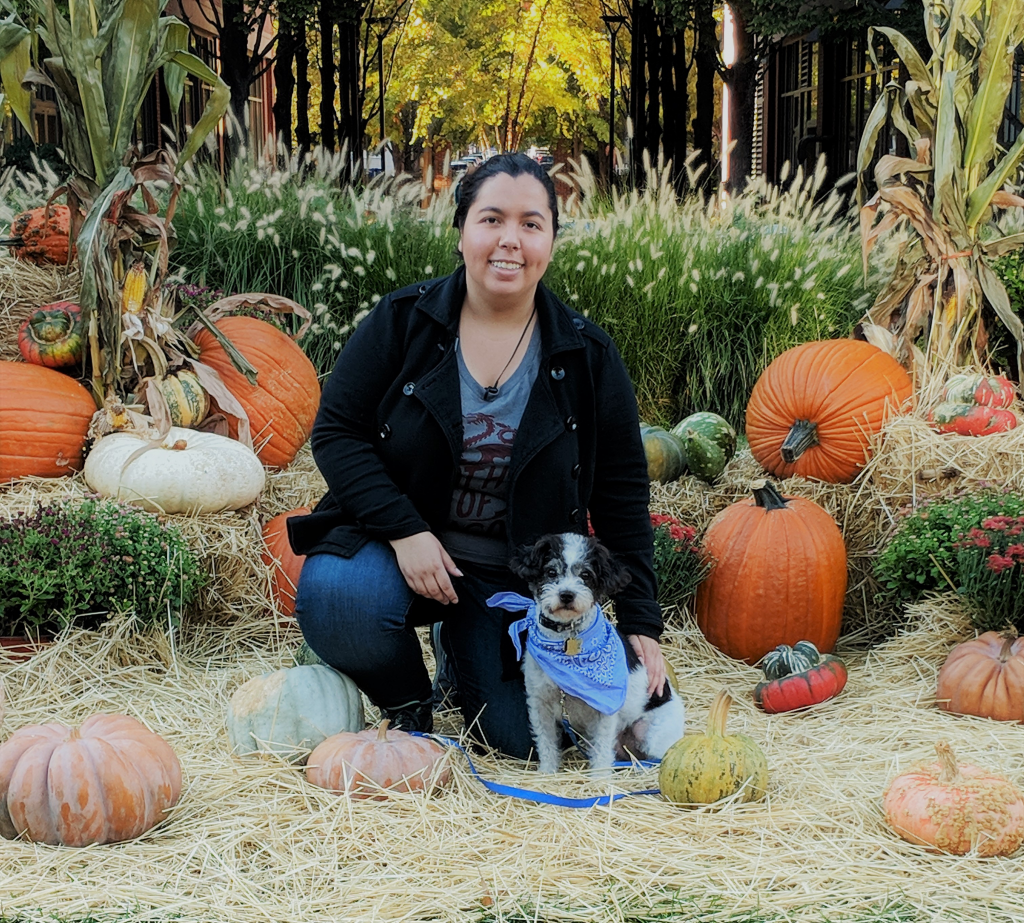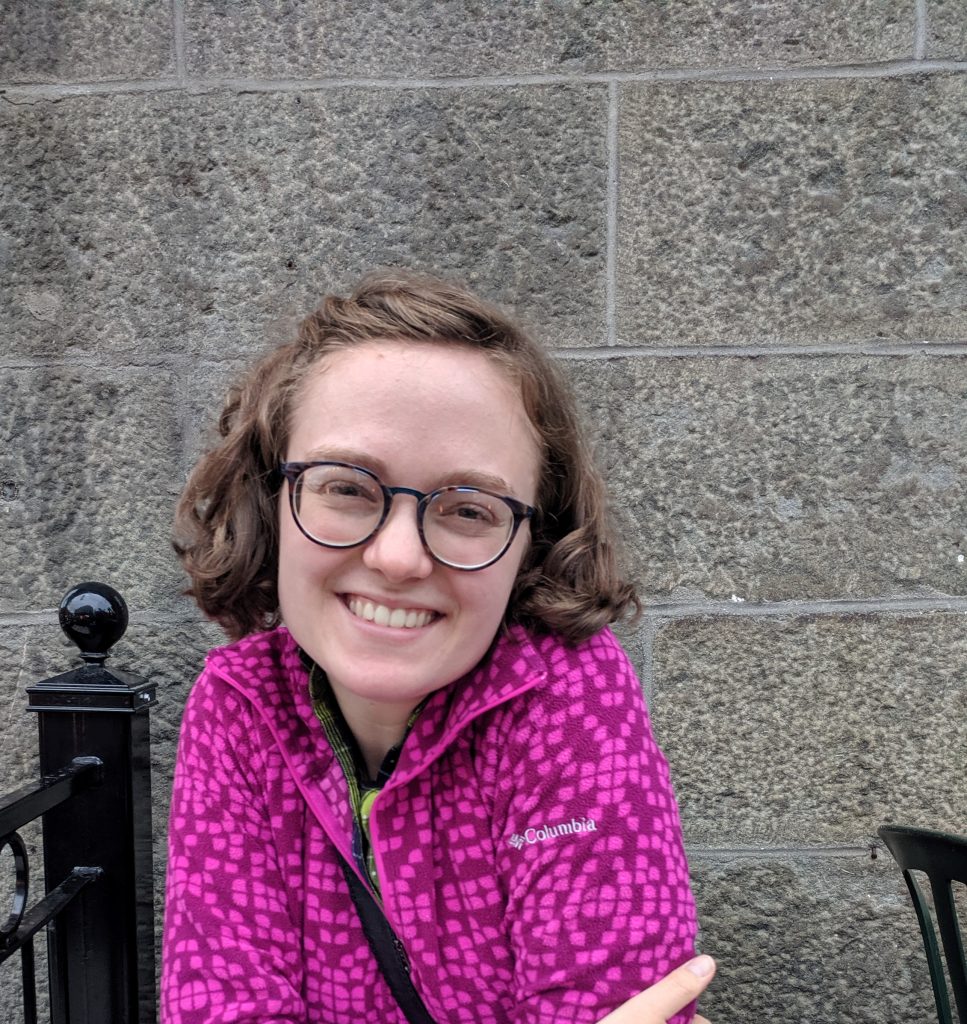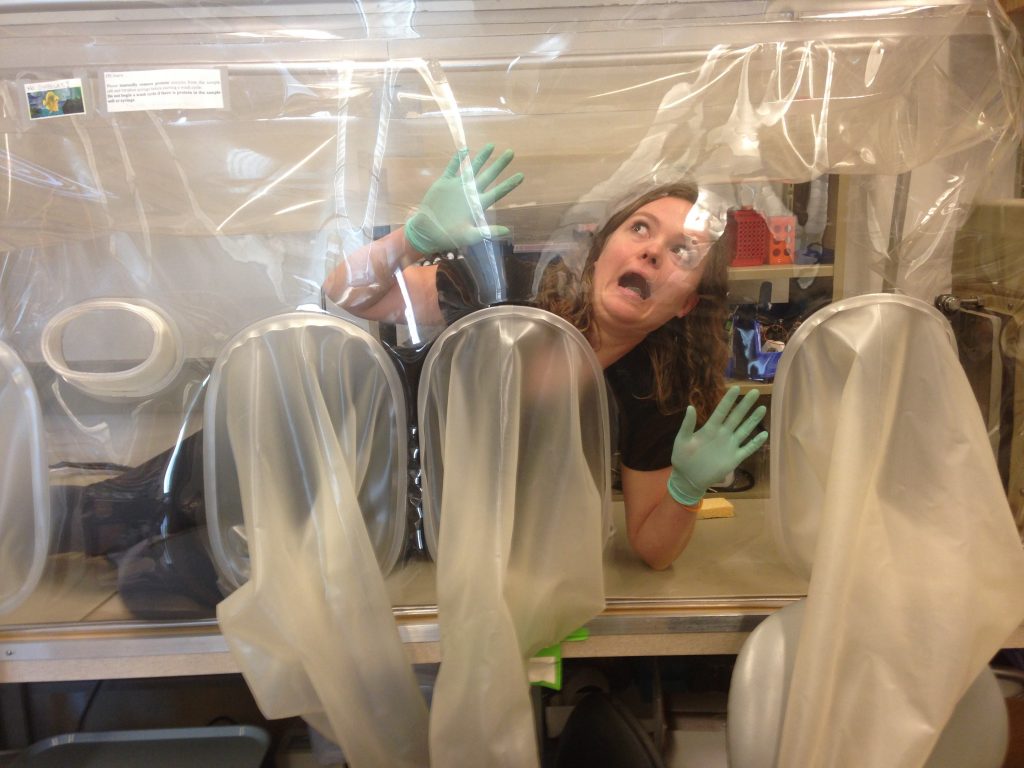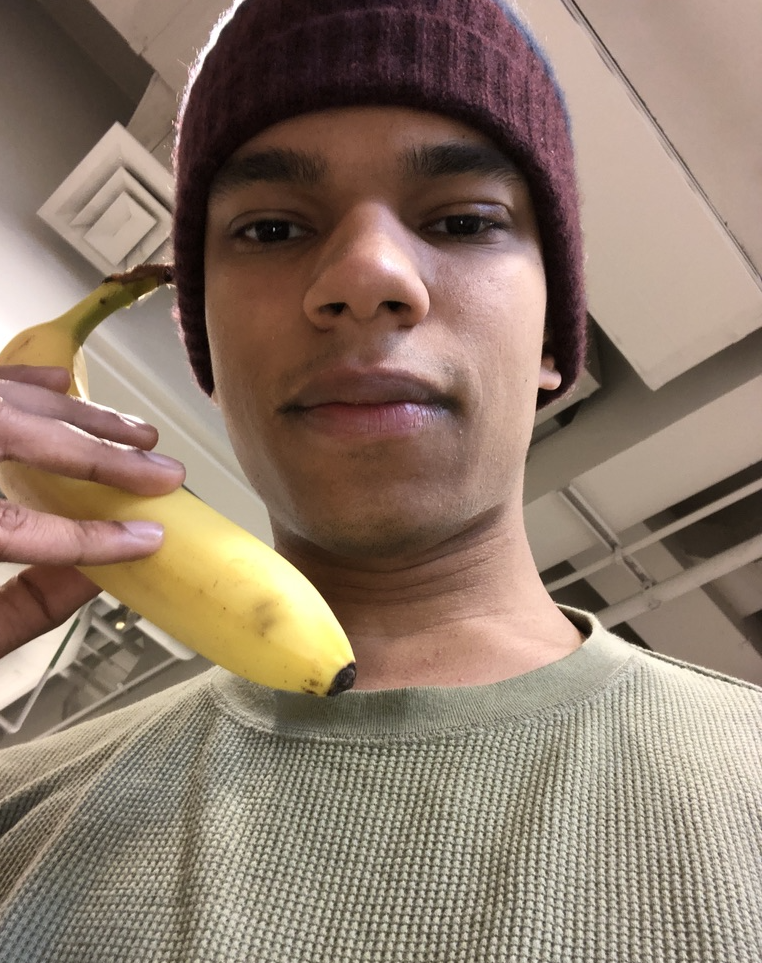Jesús Dones (he/him/his) is a 6th year chemical biology graduate student and the founding member of CADI. He grew up in Caimito, Puerto Rico and joined the Raines Group at the University of Wisconsin, Madison in 2014. Jesús then transferred to MIT with the rest of the Raines lab in his 3rd year. Jesús’ research focuses on the development of a collagen-mimetic peptide that can act as a vehicle for the detection of mammalian collagen that has suffered damage.
We sat down with Jesús over Zoom this week and asked him a few questions about his choice to come to graduate school, his favorite parts of Boston, and why he decided to start CADI.
Why did you want to get a graduate degree in chemical biology?
I started undergrad doing research in marine biology, and that sparked a passion for science and research. Then throughout that experience I developed more interest in chemistry, and I wanted to see the research we were doing through a chemist’s perspective. I switched to chemistry and really enjoyed the experience. Graduate school felt like the next step to develop my professional career in research and science.
What drew you to the Raines Lab in particular?
Back in my junior year of undergrad I went through a bunch of universities and emailed interesting professors. I really liked Ron’s research, especially his work with peptides at the interface of chemistry and biology. Once I met Ron, I saw right away how excited he was about his science. I clicked with the lab really well, the environment that he creates is really my style, and his excitement really shows through the research.
Why were you excited to transfer to MIT?
MIT is in a cool city surrounded by many historic and exciting places, so I was excited to learn and get to know more about Boston (especially as a sports fan). I was looking forward to a new experience and to broaden my scientific scope. And of course, MIT is a great university in itself.
What’s on your MIT bucket list? What’s your favorite item you’ve checked off so far?
I’m a big sports fan, so number one on the list was to go to the professional sports games in town and meet the Boston fans. Ron took us to a Bruins game, and I live next to Fenway so I can hear the Soxs fans at every home run.
Before I graduate, I’m hoping to complete the pirate certificate (I’ve done the sailing classes, but I still need pistol and fencing classes).
What’s been your biggest challenge since coming to MIT?
For me, coming in from another school in the middle of my PhD career and building a new community was a big challenge. I lost a group of friends from Wisconsin, and so coming here not knowing anyone was really hard. It was a very slow process, but everyone has been amazing. I think the MIT community is a very friendly environment. Obviously it’s not perfect, but I think the community I’ve built around myself is full of very positive and energetic people who keep life interesting around MIT.
What part of the chemistry department are you most proud of?
Our department does a great job of supporting students and developing their ideas on how the department can do better. They’ve really supported the students who take community building on their shoulders. Professors donate their own money to help groups like WIC and CADI become endowed and stay at MIT forever. I’m very proud and happy that MIT supports those ideas.
Why did you decide to start CADI?
When I came to MIT, my biggest challenge was building a community. As a Puerto Rican, I felt very different when I came to the US, and I put a lot of work into integrating into US cultural communities. When I was at Wisconsin, there were a lot of people in the department that helped me integrate into the community. Here at MIT, a lot of students didn’t have a place within the department to reach out to for help. I wanted to create a platform that can build that kind of community at MIT chemistry (and find myself a strong group of friends).
What kind of support have you gotten for CADI?
I love my CADI board crew. Everyone is so amazing and helpful. I love that they’re taking time out of their research to work on a thing that’s bigger than us. The community that I’ve found in CADI is very unique, and I feel more comfortable being myself. Within two years we’ve almost reach endowment, which means alumni and professors also see the value of CADI.
I love seeing new people join and change the path of CADI, because I want CADI to be a platform that supports people’s ideas for change.
I want to say thank you to all of the CADI board members that keep CADI going, and to the CADI members for supporting the idea and building this community.
Why is CADI important to you? How has it impacted your life?
CADI is important to me because it shows me that I’m not the only one thinking that we need to improve diversity and inclusion. The idea of CADI existing helped me understand that my feelings are valid and shared with an entire community. With CADI in place, there’s a route to community and inclusion. It’s a place that’s always there for you, to kick-start your transition into the community. I see so many people come to the events who I don’t see in other places, and I’m glad we can make them feel welcome.
What are you doing to stay sane in quarantine?
A bouncy ball chair and a standing desk have been helping me with work. But outside of that, I’m running every day for my mental health (with social distancing, of course). And I’m cooking a lot – before everything went intense, I went out and did a huge shopping trip and bought a bunch of different things (I’ve made lots of fun tacos, a fig and prosciutto pizza, and tonight is Indian night!)
Have questions/want more CADI?
Please email the CADI board with any questions!
